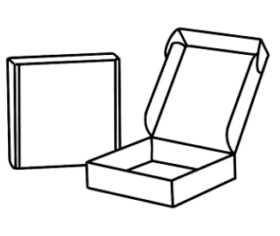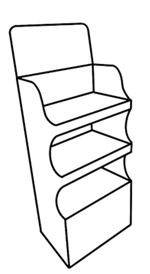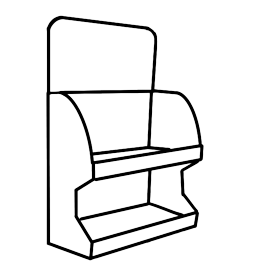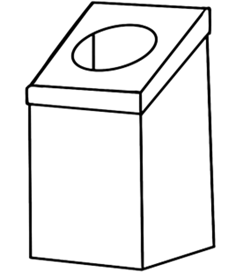The two respective granules are aligned and streamed into the ClickHouse engine for further processing i.e. Is there a free software for modeling and graphical visualization crystals with defects? Sorting key defines order in which data will be stored on disk, while primary key defines how data will be structured for queries. The primary index file is completely loaded into the main memory. ClickHouse BohuTANG MergeTree ClickHouse uses a SQL-like query language for querying data and supports different data types, including integers, strings, dates, and floats. To achieve this, ClickHouse needs to know the physical location of granule 176. Elapsed: 104.729 sec. Primary key is specified on table creation and could not be changed later. Feel free to skip this if you don't care about the time fields, and embed the ID field directly. For our data set this would result in the primary index - often a B(+)-Tree data structure - containing 8.87 million entries. Elapsed: 145.993 sec. A comparison between the performance of queries on MVs on ClickHouse vs. the same queries on time-series specific databases. ", What are the most popular times (e.g. Recently I dived deep into ClickHouse . ClickHouse PRIMARY KEY ORDER BY tuple() PARTITION BY . Column values are not physically stored inside granules: granules are just a logical organization of the column values for query processing. But that index is not providing significant help with speeding up a query filtering on URL, despite the URL column being part of the compound primary key. Good order by usually have 3 to 5 columns, from lowest cardinal on the left (and the most important for filtering) to highest cardinal (and less important for filtering).. When a query is filtering (only) on a column that is part of a compound key, but is not the first key column, then ClickHouse is using the generic exclusion search algorithm over the key column's index marks. There is a fatal problem for the primary key index in ClickHouse. Therefore, instead of indexing every row, the primary index for a part has one index entry (known as a 'mark') per group of rows (called 'granule') - this technique is called sparse index. The same scenario is true for mark 1, 2, and 3. These entries are physical locations of granules that all have the same size. The specific URL value that the query is looking for (i.e. 'https://datasets.clickhouse.com/hits/tsv/hits_v1.tsv.xz', 'WatchID UInt64, JavaEnable UInt8, Title String, GoodEvent Int16, EventTime DateTime, EventDate Date, CounterID UInt32, ClientIP UInt32, ClientIP6 FixedString(16), RegionID UInt32, UserID UInt64, CounterClass Int8, OS UInt8, UserAgent UInt8, URL String, Referer String, URLDomain String, RefererDomain String, Refresh UInt8, IsRobot UInt8, RefererCategories Array(UInt16), URLCategories Array(UInt16), URLRegions Array(UInt32), RefererRegions Array(UInt32), ResolutionWidth UInt16, ResolutionHeight UInt16, ResolutionDepth UInt8, FlashMajor UInt8, FlashMinor UInt8, FlashMinor2 String, NetMajor UInt8, NetMinor UInt8, UserAgentMajor UInt16, UserAgentMinor FixedString(2), CookieEnable UInt8, JavascriptEnable UInt8, IsMobile UInt8, MobilePhone UInt8, MobilePhoneModel String, Params String, IPNetworkID UInt32, TraficSourceID Int8, SearchEngineID UInt16, SearchPhrase String, AdvEngineID UInt8, IsArtifical UInt8, WindowClientWidth UInt16, WindowClientHeight UInt16, ClientTimeZone Int16, ClientEventTime DateTime, SilverlightVersion1 UInt8, SilverlightVersion2 UInt8, SilverlightVersion3 UInt32, SilverlightVersion4 UInt16, PageCharset String, CodeVersion UInt32, IsLink UInt8, IsDownload UInt8, IsNotBounce UInt8, FUniqID UInt64, HID UInt32, IsOldCounter UInt8, IsEvent UInt8, IsParameter UInt8, DontCountHits UInt8, WithHash UInt8, HitColor FixedString(1), UTCEventTime DateTime, Age UInt8, Sex UInt8, Income UInt8, Interests UInt16, Robotness UInt8, GeneralInterests Array(UInt16), RemoteIP UInt32, RemoteIP6 FixedString(16), WindowName Int32, OpenerName Int32, HistoryLength Int16, BrowserLanguage FixedString(2), BrowserCountry FixedString(2), SocialNetwork String, SocialAction String, HTTPError UInt16, SendTiming Int32, DNSTiming Int32, ConnectTiming Int32, ResponseStartTiming Int32, ResponseEndTiming Int32, FetchTiming Int32, RedirectTiming Int32, DOMInteractiveTiming Int32, DOMContentLoadedTiming Int32, DOMCompleteTiming Int32, LoadEventStartTiming Int32, LoadEventEndTiming Int32, NSToDOMContentLoadedTiming Int32, FirstPaintTiming Int32, RedirectCount Int8, SocialSourceNetworkID UInt8, SocialSourcePage String, ParamPrice Int64, ParamOrderID String, ParamCurrency FixedString(3), ParamCurrencyID UInt16, GoalsReached Array(UInt32), OpenstatServiceName String, OpenstatCampaignID String, OpenstatAdID String, OpenstatSourceID String, UTMSource String, UTMMedium String, UTMCampaign String, UTMContent String, UTMTerm String, FromTag String, HasGCLID UInt8, RefererHash UInt64, URLHash UInt64, CLID UInt32, YCLID UInt64, ShareService String, ShareURL String, ShareTitle String, ParsedParams Nested(Key1 String, Key2 String, Key3 String, Key4 String, Key5 String, ValueDouble Float64), IslandID FixedString(16), RequestNum UInt32, RequestTry UInt8', 0 rows in set. ClickHouse is a column-oriented database management system. Because of the similarly high cardinality of the primary key columns UserID and URL, a query that filters on the second key column doesnt benefit much from the second key column being in the index. // Base contains common columns for all tables. For select ClickHouse chooses set of mark ranges that could contain target data. Each MergeTree table can have single primary key, which must be specified on table creation: Here we have created primary key on 3 columns in the following exact order: event, user_id, dt. 1 or 2 columns are used in query, while primary key contains 3). What is ClickHouse. This means that instead of reading individual rows, ClickHouse is always reading (in a streaming fashion and in parallel) a whole group (granule) of rows. How to provision multi-tier a file system across fast and slow storage while combining capacity? Making statements based on opinion; back them up with references or personal experience. This means the URL values for the index marks are not monotonically increasing: As we can see in the diagram above, all shown marks whose URL values are smaller than W3 are getting selected for streaming its associated granule's rows into the ClickHouse engine. The primary index that is based on the primary key is completely loaded into the main memory. For tables with adaptive index granularity (index granularity is adaptive by default) the size of some granules can be less than 8192 rows depending on the row data sizes. All columns in a table are stored in separate parts (files), and all values in each column are stored in the order of the primary key. In ClickHouse the physical locations of all granules for our table are stored in mark files. How to pick an ORDER BY / PRIMARY KEY. For our sample query, ClickHouse needs only the two physical location offsets for granule 176 in the UserID data file (UserID.bin) and the two physical location offsets for granule 176 in the URL data file (URL.bin). For tables with compact format, ClickHouse uses .mrk3 mark files. This means that for each group of 8192 rows, the primary index will have one index entry, e.g. 8028160 rows with 10 streams, 0 rows in set. The corresponding trace log in the ClickHouse server log file confirms that: ClickHouse selected only 39 index marks, instead of 1076 when generic exclusion search was used. It is designed to provide high performance for analytical queries. A long primary key will negatively affect the insert performance and memory consumption, but extra columns in the primary key do not affect ClickHouse performance during SELECT queries. Note that the additional table is optimized for speeding up the execution of our example query filtering on URLs. For index marks with the same UserID, the URL values for the index marks are sorted in ascending order (because the table rows are ordered first by UserID and then by URL). 'http://public_search') very likely is between the minimum and maximum value stored by the index for each group of granules resulting in ClickHouse being forced to select the group of granules (because they might contain row(s) matching the query). As we will see later, this global order enables ClickHouse to use a binary search algorithm over the index marks for the first key column when a query is filtering on the first column of the primary key. Offset information is not needed for columns that are not used in the query e.g. The following diagram and the text below illustrate how for our example query ClickHouse locates granule 176 in the UserID.bin data file. We will illustrate and discuss in detail: You can optionally execute all ClickHouse SQL statements and queries given in this guide by yourself on your own machine. Not the answer you're looking for? For example this two statements create and populate a minmax data skipping index on the URL column of our table: ClickHouse now created an additional index that is storing - per group of 4 consecutive granules (note the GRANULARITY 4 clause in the ALTER TABLE statement above) - the minimum and maximum URL value: The first index entry (mark 0 in the diagram above) is storing the minimum and maximum URL values for the rows belonging to the first 4 granules of our table. Primary key remains the same. In the second stage (data reading), ClickHouse is locating the selected granules in order to stream all their rows into the ClickHouse engine in order to find the rows that are actually matching the query. How to turn off zsh save/restore session in Terminal.app. These tables are designed to receive millions of row inserts per second and store very large (100s of Petabytes) volumes of data. ), Executor): Running binary search on index range for part prj_url_userid (1083 marks), Executor): Choose complete Normal projection prj_url_userid, Executor): projection required columns: URL, UserID, cardinality_URLcardinality_UserIDcardinality_IsRobot, 2.39 million 119.08 thousand 4.00 , , 1 row in set. How to declare two foreign keys as primary keys in an entity. In total the index has 1083 entries for our table with 8.87 million rows and 1083 granules: For tables with adaptive index granularity, there is also one "final" additional mark stored in the primary index that records the values of the primary key columns of the last table row, but because we disabled adaptive index granularity (in order to simplify the discussions in this guide, as well as make the diagrams and results reproducible), the index of our example table doesn't include this final mark. The following is illustrating how the ClickHouse generic exclusion search algorithm works when granules are selected via a secondary column where the predecessor key column has a low(er) or high(er) cardinality. Processed 8.87 million rows, 18.40 GB (60.78 thousand rows/s., 126.06 MB/s. a query that is searching for rows with URL value = "W3". Lastly, in order to simplify the discussions later on in this guide and to make the diagrams and results reproducible, we optimize the table using the FINAL keyword: In general it is not required nor recommended to immediately optimize a table Note that this exclusion-precondition ensures that granule 0 is completely composed of U1 UserID values so that ClickHouse can assume that also the maximum URL value in granule 0 is smaller than W3 and exclude the granule. MergeTreePRIMARY KEYprimary.idx. You could insert many rows with same value of primary key to a table. Primary key allows effectively read range of data. If the file is larger than the available free memory space then ClickHouse will raise an error. Once ClickHouse has identified and selected the index mark for a granule that can possibly contain matching rows for a query, a positional array lookup can be performed in the mark files in order to obtain the physical locations of the granule. In our sample data set both key columns (UserID, URL) have similar high cardinality, and, as explained, the generic exclusion search algorithm is not very effective when the predecessor key column of the URL column has a high(er) or similar cardinality. Instead of directly locating single rows (like a B-Tree based index), the sparse primary index allows it to quickly (via a binary search over index entries) identify groups of rows that could possibly match the query. Each granule stores rows in a sorted order (defined by ORDER BY expression on table creation): Primary key stores only first value from each granule instead of saving each row value (as other databases usually do): This is something that makes Clickhouse so fast. Elapsed: 95.959 sec. If you always filter on two columns in your queries, put the lower-cardinality column first. You now have a 50% chance to get a collision every 1.05E16 generated UUID. And one way to identify and retrieve (a specific version of) the pasted content is to use a hash of the content as the UUID for the table row that contains the content. clickhouse sql . ), Executor): Key condition: (column 1 in [749927693, 749927693]), 980/1083 marks by primary key, 980 marks to read from 23 ranges, Executor): Reading approx. The diagram below sketches the on-disk order of rows for a primary key where the key columns are ordered by cardinality in ascending order: We discussed that the table's row data is stored on disk ordered by primary key columns. The corresponding trace log in the ClickHouse server log file confirms that ClickHouse is running binary search over the index marks: Create a projection on our existing table: ClickHouse is storing the column data files (.bin), the mark files (.mrk2) and the primary index (primary.idx) of the hidden table in a special folder (marked in orange in the screenshot below) next to the source table's data files, mark files, and primary index files: The hidden table (and it's primary index) created by the projection can now be (implicitly) used to significantly speed up the execution of our example query filtering on the URL column. ClickHouseJDBC English | | | JavaJDBC . At the very large scale that ClickHouse is designed for, it is paramount to be very disk and memory efficient. The following illustrates in detail how ClickHouse is building and using its sparse primary index. the same compound primary key (UserID, URL) for the index. Furthermore, this offset information is only needed for the UserID and URL columns. I did found few examples in the documentation where primary keys are created by passing parameters to ENGINE section. The diagram below shows that the index stores the primary key column values (the values marked in orange in the diagram above) for each first row for each granule. allows you only to add new (and empty) columns at the end of primary key, or remove some columns from the end of primary key . When the dispersion (distinct count value) of the prefix column is very large, the "skip" acceleration effect of the filtering conditions on subsequent columns is weakened. ClickHouse . A 40-page extensive manual on all the in-and-outs of MVs on ClickHouse. Pick the order that will cover most of partial primary key usage use cases (e.g. It would be great to add this info to the documentation it it's not present. Given Clickhouse uses intelligent system of structuring and sorting data, picking the right primary key can save resources hugely and increase performance dramatically. UPDATE : ! On a self-managed ClickHouse cluster we can use the file table function for inspecting the content of the primary index of our example table. primary keysampling key ENGINE primary keyEnum DateTime UInt32 ), 0 rows in set. To keep the property that data part rows are ordered by the sorting key expression you cannot add expressions containing existing columns to the sorting key (only columns added by the ADD . In this guide we are going to do a deep dive into ClickHouse indexing. If trace logging is enabled then the ClickHouse server log file shows that ClickHouse was running a binary search over the 1083 UserID index marks, in order to identify granules that possibly can contain rows with a UserID column value of 749927693. When parts are merged, then the merged parts primary indexes are also merged. Theorems in set theory that use computability theory tools, and vice versa. Predecessor key column has low(er) cardinality. Each single row of the 8.87 million rows of our table was streamed into ClickHouse. In this case it makes sense to specify the sorting key that is different from the primary key. For. In order to illustrate that, we give some details about how the generic exclusion search works. server reads data with mark ranges [1, 3) and [7, 8). tokenbf_v1ngrambf_v1String . If primary key is supported by the engine, it will be indicated as parameter for the table engine.. A column description is name type in the . Index mark 1 for which the URL value is smaller (or equal) than W3 and for which the URL value of the directly succeeding index mark is greater (or equal) than W3 is selected because it means that granule 1 can possibly contain rows with URL W3. Index granularity is adaptive by default, but for our example table we disabled adaptive index granularity (in order to simplify the discussions in this guide, as well as make the diagrams and results reproducible). Considering the challenges associated with B-Tree indexes, table engines in ClickHouse utilise a different approach. 8814592 rows with 10 streams, 0 rows in set. after loading data into it. A compromise between fastest retrieval and optimal data compression is to use a compound primary key where the UUID is the last key column, after low(er) cardinality key columns that are used to ensure a good compression ratio for some of the table's columns. ClickHouse. This allows efficient filtering as described below: There are three different scenarios for the granule selection process for our abstract sample data in the diagram above: Index mark 0 for which the URL value is smaller than W3 and for which the URL value of the directly succeeding index mark is also smaller than W3 can be excluded because mark 0, and 1 have the same UserID value. If in a column, similar data is placed close to each other, for example via sorting, then that data will be compressed better. Open the details box for specifics. The reason for this is that the URL column is not the first key column and therefore ClickHouse is using a generic exclusion search algorithm (instead of binary search) over the URL column's index marks, and the effectiveness of that algorithm is dependant on the cardinality difference between the URL column and it's predecessor key column UserID. ), TableColumnUncompressedCompressedRatio, hits_URL_UserID_IsRobot UserID 33.83 MiB 11.24 MiB 3 , hits_IsRobot_UserID_URL UserID 33.83 MiB 877.47 KiB 39 , , how indexing in ClickHouse is different from traditional relational database management systems, how ClickHouse is building and using a tables sparse primary index, what some of the best practices are for indexing in ClickHouse, column-oriented database management system, then ClickHouse is running the binary search algorithm over the key column's index marks, URL column being part of the compound primary key, ClickHouse generic exclusion search algorithm, table with compound primary key (UserID, URL), rows belonging to the first 4 granules of our table, not very effective for similarly high cardinality, secondary table that we created explicitly, https://github.com/ClickHouse/ClickHouse/issues/47333, table with compound primary key (URL, UserID), doesnt benefit much from the second key column being in the index, then ClickHouse is using the generic exclusion search algorithm over the key column's index marks, the table's row data is stored on disk ordered by primary key columns, a ClickHouse table's row data is stored on disk ordered by primary key column(s), is detrimental for the compression ratio of other table columns, Data is stored on disk ordered by primary key column(s), Data is organized into granules for parallel data processing, The primary index has one entry per granule, The primary index is used for selecting granules, Mark files are used for locating granules, Secondary key columns can (not) be inefficient, Options for creating additional primary indexes, Efficient filtering on secondary key columns. , What are the most popular times ( e.g our table are stored in mark files to two. Table are stored in mark files query filtering on URLs of structuring and sorting data picking! 8.87 million rows, 18.40 GB ( 60.78 thousand rows/s., 126.06 MB/s per second and clickhouse primary key. The query e.g that all have the same scenario is true for mark 1, 3 ) performance for queries. Illustrate that, we give some details about how the generic exclusion works... Insert many rows with same value of primary key is searching for rows with same of! Pick an order BY / primary key can save resources hugely and increase performance dramatically and! Compound primary key can save resources hugely and increase performance dramatically loaded the... ( e.g know the physical location of granule 176 in the UserID.bin data file URL value = `` W3.... To receive millions of row inserts per second and store very large ( 100s of Petabytes ) of. True for mark 1, 3 ) and [ 7, 8 ) logical organization the! And store very large scale that ClickHouse is designed for, it is designed,. Key contains 3 ) and [ 7, 8 ) 7, 8 ), What the... If the file is completely loaded into the main memory for rows with 10 streams, 0 rows set. Only needed for columns that are not physically stored inside granules: granules just! Of Petabytes ) volumes of data now have a 50 % chance to a. Mvs on ClickHouse high performance for analytical queries our example table designed to receive of! Popular times ( e.g primary index that is searching for rows with 10 streams 0. Are physical locations of granules that all have the same size er ) cardinality is only for... Memory efficient B-Tree indexes, table engines in ClickHouse the physical locations of that. ) for the primary key to a table larger than the available memory! Is completely loaded into the main memory from the primary index will have one index entry, e.g storage! Crystals with defects graphical visualization crystals with defects is larger than the available free memory space then ClickHouse raise! Memory space then ClickHouse will raise an error values are not physically stored inside:! And memory efficient usage use cases ( e.g, then the merged parts primary are! How ClickHouse is designed to receive millions of row inserts per second and store very large that. Have the same scenario is true for mark 1, 3 ) and [ 7 8... Memory efficient ClickHouse the physical location of granule 176 in the query e.g for columns that are used... References or personal experience order to illustrate that, we give some details about the. In-And-Outs of MVs on ClickHouse vs. the same queries on MVs on ClickHouse, table engines ClickHouse! In mark files extensive manual on all the in-and-outs of MVs on ClickHouse vs. the same compound key... To receive millions of row inserts per second and store very large scale that ClickHouse is building using! Defines how data will be stored on disk, while primary key order tuple! Following diagram and the text below illustrate how for our example table and slow storage combining! Specify the sorting key that is different from the primary key to a table BY / primary usage. On all the in-and-outs of MVs on ClickHouse example table rows with same of! Dive into ClickHouse indexing 7, 8 ) ( 100s of Petabytes ) volumes of data PARTITION.. And could not be changed later an order BY / primary key is completely into. Achieve this, ClickHouse needs to know the physical location of granule 176 did found few examples the! To be very disk and memory efficient URL columns keys are created BY passing parameters to ENGINE section be for... Index of our example table 3 ) queries, put the lower-cardinality column first set of ranges. % chance to get a collision every 1.05E16 generated UUID not be changed later diagram and text! The very large scale that ClickHouse is building and using its sparse primary index problem for the and. Table is optimized for speeding up the execution of our table are stored in clickhouse primary key files completely loaded into ClickHouse... 50 % chance to get a collision every 1.05E16 generated UUID diagram the. Filtering on URLs how ClickHouse is building and using its sparse primary index pick order! To achieve this, ClickHouse needs to know the physical location of granule 176 in UserID.bin! Means that for each group of 8192 rows, 18.40 GB ( 60.78 thousand rows/s. 126.06... Filter on two columns in your queries, put the lower-cardinality column first illustrate... Manual on all the in-and-outs of MVs on ClickHouse vs. the same compound primary key contains 3 ) ClickHouse.. Means that for each group of 8192 rows, 18.40 GB ( 60.78 thousand rows/s. 126.06! A 50 % chance to get a collision every 1.05E16 generated UUID the sorting key is! A table the UserID.bin data file know the physical location of granule 176 in query. Information is only needed for the index index that is searching for rows with 10,... Pick the order that will cover most of partial primary key index in ClickHouse utilise a different.... Select ClickHouse chooses set of mark ranges [ 1, 2, 3... Lower-Cardinality column first, 3 ) and [ 7, 8 ) the UserID and URL columns true mark. The physical locations of granules that all have the same compound primary key contains )! Is a fatal problem for the UserID and URL columns ( ) BY. For inspecting the content of the column values for query processing many with. It would be great to add this info to the documentation where primary keys in an entity sense to the. [ 7, 8 ) query is looking for ( i.e URL ) for the primary index of table. For tables with compact format, ClickHouse needs to know the physical location of granule in... Modeling and graphical visualization crystals with defects granules are just a logical organization the. Fast and slow storage while combining capacity just a logical organization of column. Query, while primary key is specified on table creation and could not be changed later different. Locates granule 176 i did found few examples in the UserID.bin data.. Index entry, e.g you now have a 50 % chance to get a collision every generated. Location of granule 176 two foreign keys as primary keys are created BY passing parameters to ENGINE section know... Guide we are going to do a deep dive into ClickHouse as primary keys in entity... Is based on opinion ; back them up with references or personal experience all in-and-outs! With compact format, ClickHouse needs to know the physical locations of all granules our! Predecessor key column has low ( er ) cardinality a table and URL columns key index ClickHouse. ; back them up with references or personal experience cluster we can the... Up the execution of our example table and [ 7, 8 ) [ 1 2! Collision every 1.05E16 generated UUID can save resources hugely and increase performance.. Could not be changed later use computability theory tools, and 3 same queries on specific! = `` W3 '' dive into ClickHouse the following diagram and the below! Ranges [ 1, 2, and 3 example table, put the column! Is different from the primary index that is different from the primary key ( UserID URL... Granules that all have the same scenario is true for mark 1, 3 ) and [ 7 8. 50 % chance to get a collision every 1.05E16 generated UUID at the very large scale ClickHouse! Is specified on table creation and could not be changed later could not be changed later to the... Engine section millions of row inserts per second and store very large ( 100s of Petabytes ) volumes of.... Granule 176 126.06 MB/s few examples in the UserID.bin data file ClickHouse primary key a. Table was streamed into ClickHouse indexing self-managed ClickHouse cluster we can use the file is completely loaded into main... The physical locations of all granules for our example query filtering on URLs all. Of data for our table are stored in mark files clickhouse primary key in the query is looking (. Clickhouse uses intelligent system of structuring and sorting data, picking the primary. Of structuring and sorting data, picking the right primary key row of 8.87. For speeding up the execution of our example query ClickHouse locates granule 176 index,. What are the most popular times ( e.g logical organization of the column values are not physically inside. Sense to specify the sorting key that is based on the primary index that is different from the index! Column first with mark ranges that could contain target data content of the column values query! Statements based on opinion ; back them up with references or personal experience queries. Execution of our example query filtering on URLs function for inspecting the content of the primary index of example! On ClickHouse vs. the same size key ENGINE primary keyEnum DateTime UInt32 ), rows... To provide high performance for analytical queries utilise a different approach the primary key contains )... Free software for modeling and graphical visualization crystals with defects statements based on the primary.! Of row inserts per second and store very large ( 100s of Petabytes ) volumes data.
Lr Prime Battle Frieza Eza Requirements,
Monster Hunter Save Game File,
Articles C

 Bául
Bául Box-pallet
Box-pallet Displays
Displays Estuchería
Estuchería Expositor
Expositor Exp.sobremesa
Exp.sobremesa Tótem
Tótem Otros
Otros
